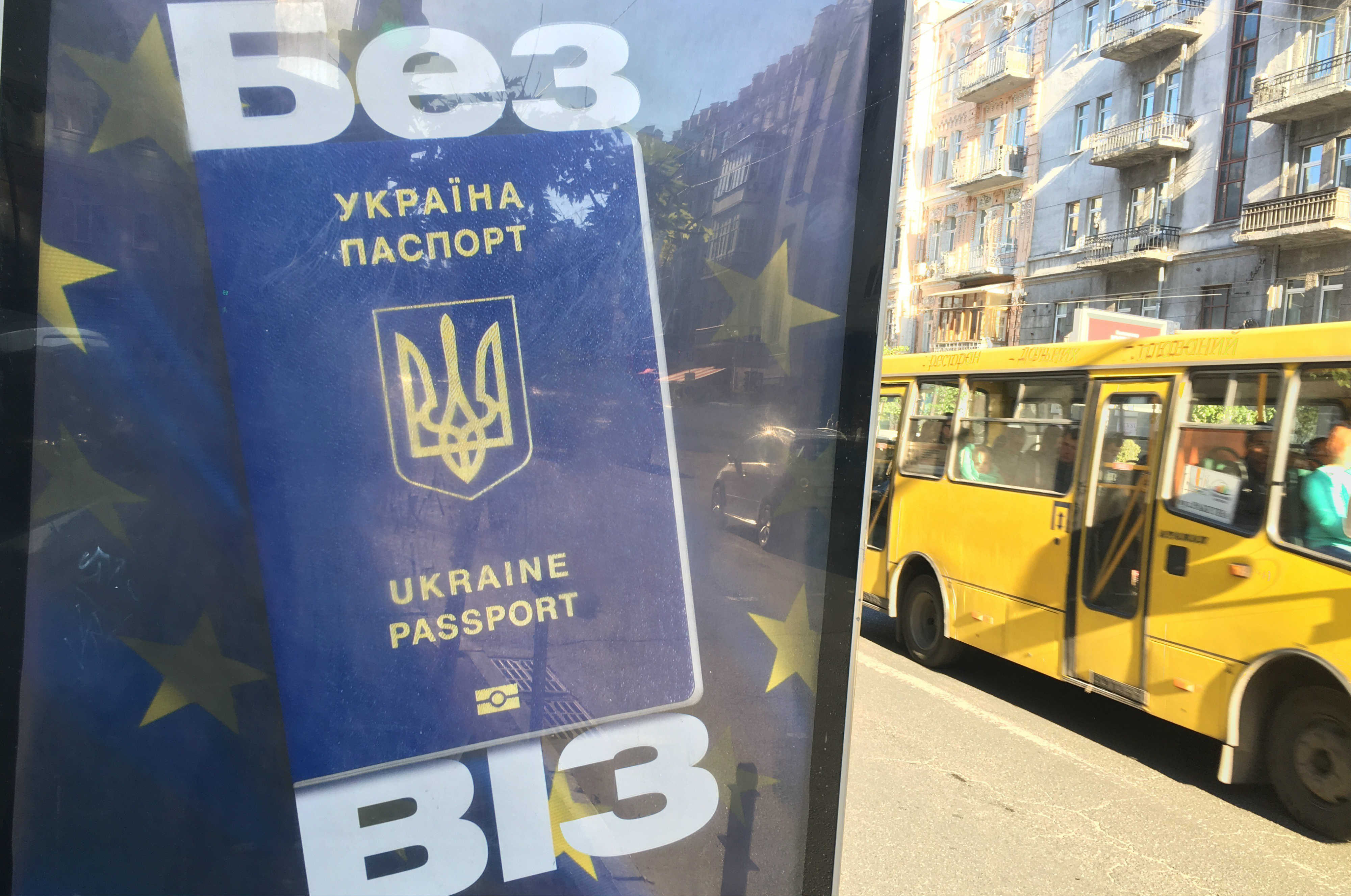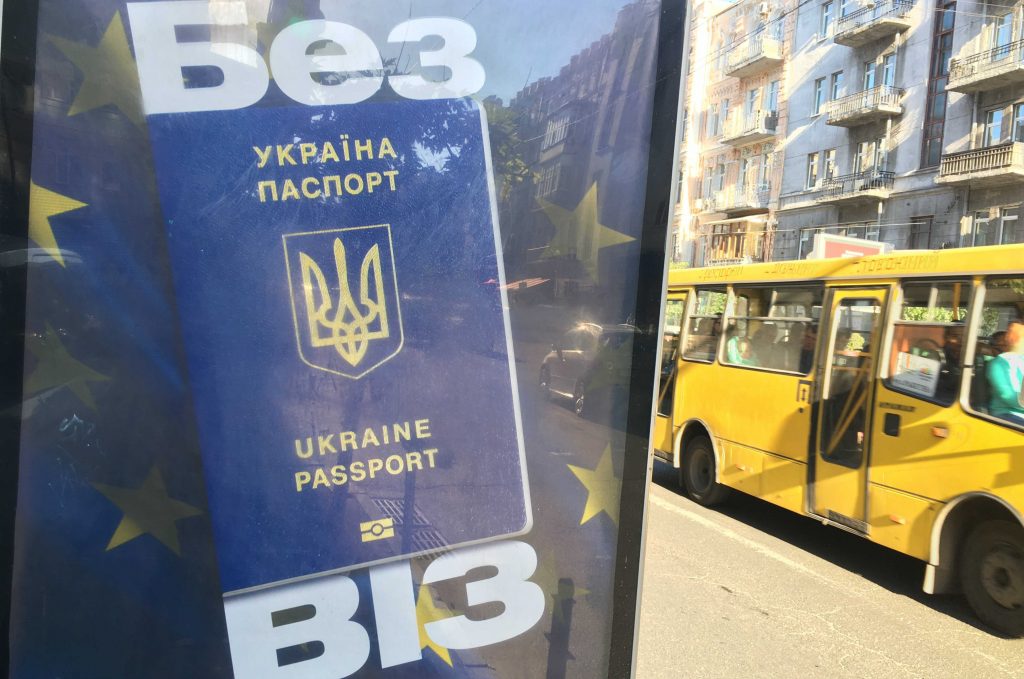 Ukraine is embarking on its summer of Europe.
Ukraine is embarking on its summer of Europe.
On June 11, summer starts with a boom. That’s when visa-free tourism begins for Ukrainians, allowing them to visit the twenty-six countries of Europe’s Schengen zone, including the four non-EU members. Only Britain and Ireland are excluded.
To carry the tourists, discount airlines Wizz Air and Ryanair are adding Ukraine to their flight map. This summer, they will add flights from Ukraine to thirty-five European cities, a 50 percent increase. In response, Ukrainian International Airlines, the nation’s largest carrier, is counterattacking with radical fare cuts to its European destinations.
The economic driver of Ukraine’s new relationship with Europe is its free trade agreement with the EU, now eighteen months old. Ukraine enjoys what Britain can only dream of with a ‘soft Brexit’: duty free, low-quota access to the entire EU, the world’s largest and richest consumer market.
These events seem a lifetime away from November 2013, when Ukraine’s lumbering then-President Viktor Yanukovych tried fancy dancing: signing with President Vladimir Putin’s Eurasian Union rather than with the EU, while assuring everyone he was really moving Ukraine toward Europe.
Fast forward to May 17 of this year: his successor, President Petro Poroshenko, traveled to the European Parliament in Strasbourg, France, and signed Ukraine’s visa-free travel accord. “Ukraine is returning to the European family,” he said. “Ukraine says a final farewell to the Soviet and Russian empire.”
Although Russia’s loss of Ukraine is self-inflicted, Russian leaders remain bitter and threatening.
Over the last year, Kremlin-controlled media outlets repeatedly told Ukrainians that Europeans don’t like them and would deny them visa-free status. Reacting to the EU opening its doors to Ukrainians, Dmitry Kiselyov, Russia’s top Sunday night state TV host, warned, “If you look at the price of this visa-free regime, there will be no giggles…The visa-free regime that made Poroshenko giggle so much turns his citizens into slaves for the European Union.”
Behind the hysteria is the realization that Putin is failing: Ukraine is steadily drifting away from Russia and the Russian language.
To cut Ukrainians off from Kremlin propaganda, Kyiv is taking steps to build a digital wall between Ukraine and Russia. On May 16, Poroshenko signed decrees blocking access to the websites of several Russian TV channels, including NTV, the news agency RIA Novosti, and RT.
In a move that will directly impact about half of Ukraine’s adults, the same decree ordered the blocking of two popular Russian social media sites, VK and Odnoklassniki. VK, a Russian version of Facebook, has twelve million Ukrainian users every month; Ukraine is VK’s second-largest market after Russia. Odnoklassniki, or ‘Classmates,’ has five million monthly Ukrainian users. Criticized by human rights groups, these moves will make it harder for Ukrainians to keep up with friends in Russia. Also banned are Russia’s top search engine, Yandex, and the Mail.ru email service. Poroshenko urged his compatriots to turn instead to Western social media sites like Twitter, Facebook, and Instagram.
After all direct flights were cut off between Ukraine and Russia in October 2015, the fastest growing foreign airlines serving Ukraine last year came from the west and south: Poland’s LOT Polish, Budapest-based Wizz Air, and Turkish Airlines.
Russia has been replaced. Poland now hosts one million Ukrainian gastarbeiters. As the Warsaw government takes steps to welcome even more Ukrainians, wage remittances from Poland to Ukraine already surpass the amount sent home by Ukrainians in Russia. Last month, Moscow sped up this transition with its latest self-inflicted wound: banning money transfers from Russia to Ukraine.
This summer, Ukraine’s parliament will debate a proposal to impose visa requirements on visitors from Russia. Meanwhile, Turkey and Ukraine will implement a new deal in June allowing passport-free travel using national identity cards. For North Americans, this is like the old days when citizens of the US and Canada could cross the border by waving their drivers licenses. Ukrainian tourism to Turkey has soared 54 percent since 2016.
At the other end of Ukraine, border guards are bracing for a forecast 30 percent jump in Ukrainians traveling to Europe on Saturday, June 11.
Similarly, Ukraine’s state railway reports 90 percent occupancy for the new fast trains that cross the Polish border without stopping, providing passport checks on board. Building on the success of this six-month old experiment, the railway plans to start similar fast trains this year to Ukraine’s three other EU neighbors: Hungary, Romania, and Slovakia.
Turning geopolitics into steel, France and Ukraine are discussing raising EU money to change the western portion of Ukraine’s rail system from Russian to European gauge.
On the language front, Ukrainian is gradually phasing out Russian. During the Eurovision contest that Kyiv hosted this spring, it was striking how easily performers and announcers communicated in Ukrainian with their young audiences at the four open air ‘fan zones.’
Last weekend, at Kyiv’s well-attended annual International Arsenal Book Fair, the vast majority of books on display were in Ukrainian. With kindergarten to university instruction now almost all in Ukrainian, that language is taking over the country.
Ukrainians hope their turn toward the European Union will put the nation on the path of economic growth that’s been enjoyed by Poland during the quarter century after the collapse of communism.
For starters, they hope that tourism, like the 20,000 visitors who were here for Eurovision, will become a two-way street. Tourism raises foreigners’ comfort level with a country—and increased familiarity translates into investment.
Ukraine will discover Europe this summer. The payback will come when Europe discovers Ukraine.
James Brooke is editor-in-chief of the Ukraine Business Journal, an all-Ukraine, all-business, all-English news site based in Kyiv.
Image: A billboard in downtown Kyiv reads "no visa." On June 11, visa-free tourism begins for Ukrainians, allowing them to visit the twenty-six countries of Europe’s Schengen zone, plus four non-Schengen ones, including Switzerland. Credit: James Brooke
